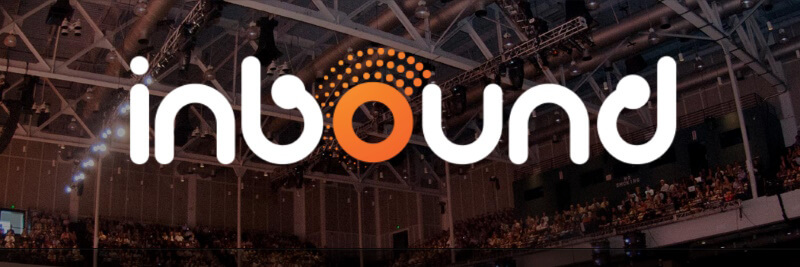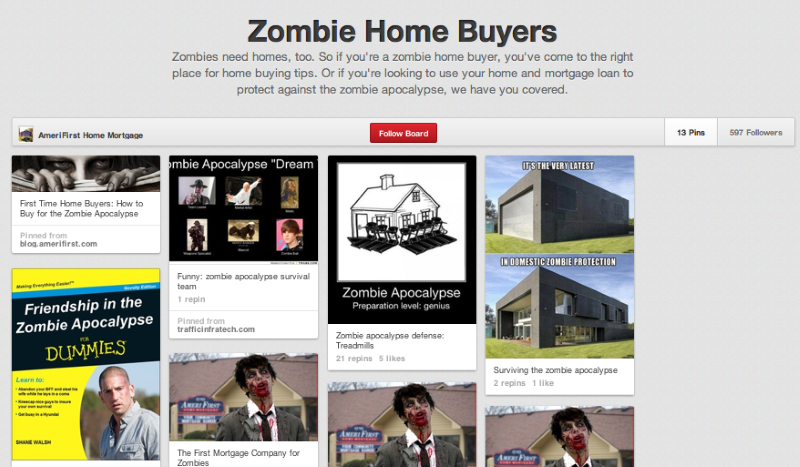#Inbound13 Marketing Conference: 13 Takeaways

Marketers worldwide are still buzzing about Inbound 13, the world’s largest inbound marketing conference. HubSpot’s annual gathering, held in Boston, drew an astounding 5,300 marketing professionals from 34 countries worldwide. Between over 100 amazing speakers like Seth Godin and Arianna Huffington, an on-site concert and tons of networking opportunities, it’s no surprise the designated hashtag of #Inbound13 was trending on Twitter for much of the conference.
Whether you were lucky enough to score a spot at the show, or you’re curious about some of the incredible inbound marketing lessons learned during the four-day event, we’ve compiled a list of brilliant takeaways from the conference.
Inbound Marketing
1. Treat Your Prospects like People
The conference was kicked off with a truly inspiring video on inbound marketing created by HubSpot’s team:
The moral? In order to connect with your prospects, it’s critical to treat them like people. It’s entirely too easy for marketers to get caught up in established patterns of outreach, which could range from publishing 10 blog posts a week to Tweeting 20 times a day. Volume is no substitute for quality, and if your website metrics don’t reflect positive growth, it’s probably time for a new approach. Inbound marketing should be metrics-driven, in order to ensure you’ve identified approaches which delight your company’s customers.
2. Be Remarkable
Seth Godin was among the keynote speakers at Inbound 13, and his message clearly aligned with HubSpot’s recommendation to market straight to humans. He clearly explained the secret to creating content people want to read, by stating “it’s more important to do something worth tweeting about than to get your next tweet out.” If your company hasn’t established outstanding customer service or learned how to create great product, your inbound marketing efforts could be nothing more than noise.
3. Protect Creativity
Ariana Huffington, founder of the Huffington Post, led a session which was uniquely focused on health, well-being, and kindness. What do these factors have to do with inbound marketing? In Huffington’s opinion, a great deal. She stated that “sleep is a leadership tool. A performance enhancement tool.” Perhaps more importantly, Huffington believes that a culture of burnout is incompatible with creativity. If you’ve been staring at your computer, trying to complete your next blog for hours, it may be most helpful to take a nap or other time away from your work.
4. Inbound Marketing Is Not the Answer
There was an audible gasp when HubSpot Co-Founder and CTO Dharmesh Shah opened his keynote presentation with a slide that read “inbound marketing is not the answer.” HubSpot software isn’t closing their doors, and to be clear, inbound marketing still works. However, it’s not the complete answer. Content marketing isn’t just a matter of drawing people to your website. Once they’re delighted with your blog, then what? Content marketers of the future won’t just focus on blogs, but will also master the art of lead nurturing through email marketing, and collaborating with sales to create a comprehensive customer experience that’s totally likeable.
5. Be a Hero
Perhaps one of the most fascinating analogies for great inbound marketing came from marketing author and speaker Christopher S. Penn, who advised his audience to “awaken their inner superhero.” To be clear, in Penn’s opinion, blogging twice a week doesn’t make you a superhero. Going out of your way to be better and more helpful than anyone else in your industry? Now, that’s heroic. As Penn points out, our resources for self-education are almost limitless, thanks to the digital age. Don’t stop learning and improving, and your inbound marketing will be of a super-heroic quality.
Content Marketing
6. You Can’t Create Content Without Sales
Serial entrepreneur Jeff Hoffman is a well-known for his ability to see the big picture, and his session on content marketing focused on teaching inbound marketing professionals to bring the sales process into content marketing. Why is this a critical best practice? Well, consider the following:
- Sales knows what customers want.
- Sales have relationships with existing customers.
- Sales are the face of your organization.
At big companies, getting sales professionals to create content can effectively amplify reach. Hoffman recommended educating sales on the value of being involved with content marketing, and creating incentives for participation. If you’re struggling with resources to blog more often, the answer to your problem is probably located right across the office.
7. Tell Stories in Visuals
Agency owner and presentation specialist Nancy Duarte pointed out an interesting truth: your audience wants to love your content. They don’t want to be unmoved, but rather be engaged and engrossed in your story. Duarte believes that it’s critical to understand what motivates your audience, and tell stories in visuals which influence changes in behavior. Whether you’re creating a deck for SlideShare or filming a video, thinking in visual terms of ways to communicate your message can help you reach a wider audience and really bring your message home.
8. Be Totally Transparent
98% of Americans don’t trust information on the internet. It’s an uncomfortable side-effect of the era of self-publishing, and this culture of distrust can present challenges for companies engaged in creating custom content. Moz founder Rand Fishkin gave an inspiring talk on how to succeed with content marketing at Inbound 13, and one of his primary recommendations was to be really honest and transparent with your audience. He advised marketers to take an uncomfortable truth that you don’t want to share, and share it. This level of honesty is bound to stand out online, and force people to stop, listen, and trust you.
9. Become a Writing God
While the explosive growth of mobile technology and the power of visual content were a major theme at Inbound 13, HubSpot Content Marketer Beth Dunn emphasized the value of good, old-fashioned written content in her session. Her message challenged her audience to not just settle for being mediocre, competent bloggers, but to push to develop a voice and style that have the same staying power as literary greats. Dunn stated “I have my deities, my writing gods that I admire and aspire to be more like.” Listen to what your favorite authors have to say about the art of writing, and more importantly practice every day. Even though videos may be red hot, words are still the primary currency for communication between companies and humans.
10. Boring Industries Can Create Amazing Content
There were a number of presentations at Inbound 13 which focused on B2B content marketing, specifically how to create interesting articles and social media posts even if your company’s product or services aren’t particularly glamorous or photogenic. Dan Moyle, Inbound Marketing evangelist at a major mortgage company, advised his audience that being in a boring industry is no excuse for avoiding content marketing or failing to establish a presence on visually-driven social media networks. Figure out what interesting things your audience loves, and use them to create content. Case in point: Moyle’s wildly-popular pinboard on Pinterest dedicated to Zombies, including the Zombie’s guide to applying for a mortgage:

Social Media
11. Get There Early
Ramon DeLeon, social media leader at Domino’s pizza, told one of the most inspiring stories heard anywhere at the Inbound 13 conference. DeLeon began his career at Domino’s at age 19, as a pizza delivery driver, and has managed to climb his way to a top position in the company’s marketing department through a great deal of hard work, perseverance, and “child-like” joy in his work, regardless of assignment. His social media and inbound marketing tips consisted of the following:
- Show Up Early with the Desire to Make a Difference
- Work Is Hard, but Hard Work Makes You Successful
- Work, Play and Create with the Passion of a Child
It’s no secret that social media can be monotonous, which is why DeLeon’s message is so incredibly important. Work hard to make your social media presence very social and original, and never stop trying to improve.
12. Streamline Your Monitoring
When you effectively monitor your “big three” social media accounts in just 45 minutes a day, what will you do with all of the extraneous time? Create more remarkable content, and recharge. HubSpot’s Content Strategist Anum Hussain is an expert on balancing quality and efficiency, and she shared this incredible 7-step process for social media monitoring in just 45 minutes:
- 10 Minutes – Monitor Facebook Comments
- 1 Minute – Check Facebook Messages
- 15 Minutes – Monitor Twitter Chatter
- 2 Minutes – Check Google Alerts for Brand Mentions
- 2 Minutes – Check Your LinkedIn Company Page
- 5 Minutes – Use Your LinkedIn Stream to Find Relevant Content
- 10 Minutes – Engage in LinkedIn Groups
13. Tell Someone Else’s Story
It’s really difficult to tell your company’s story. Emily Olson, the entrepreneur behind Foodzie, believes that the most important thing you can bring to your social media streams are other people’s stories. People are more likely to connect on an emotional level with the story of your company’s managing accountant than a boring recap of your product’s features. Social media managers should always be on the look-out for interesting tales, like a customer’s delight in using their new product or more insight on what makes your CEO tick, to create remarkable content for publishing to Facebook, Twitter, and other channels.
Did you attend HubSpot’s Inbound 13 Conference? What were your favorite sessions, speakers and takeaways on inbound marketing?

Comments (0)